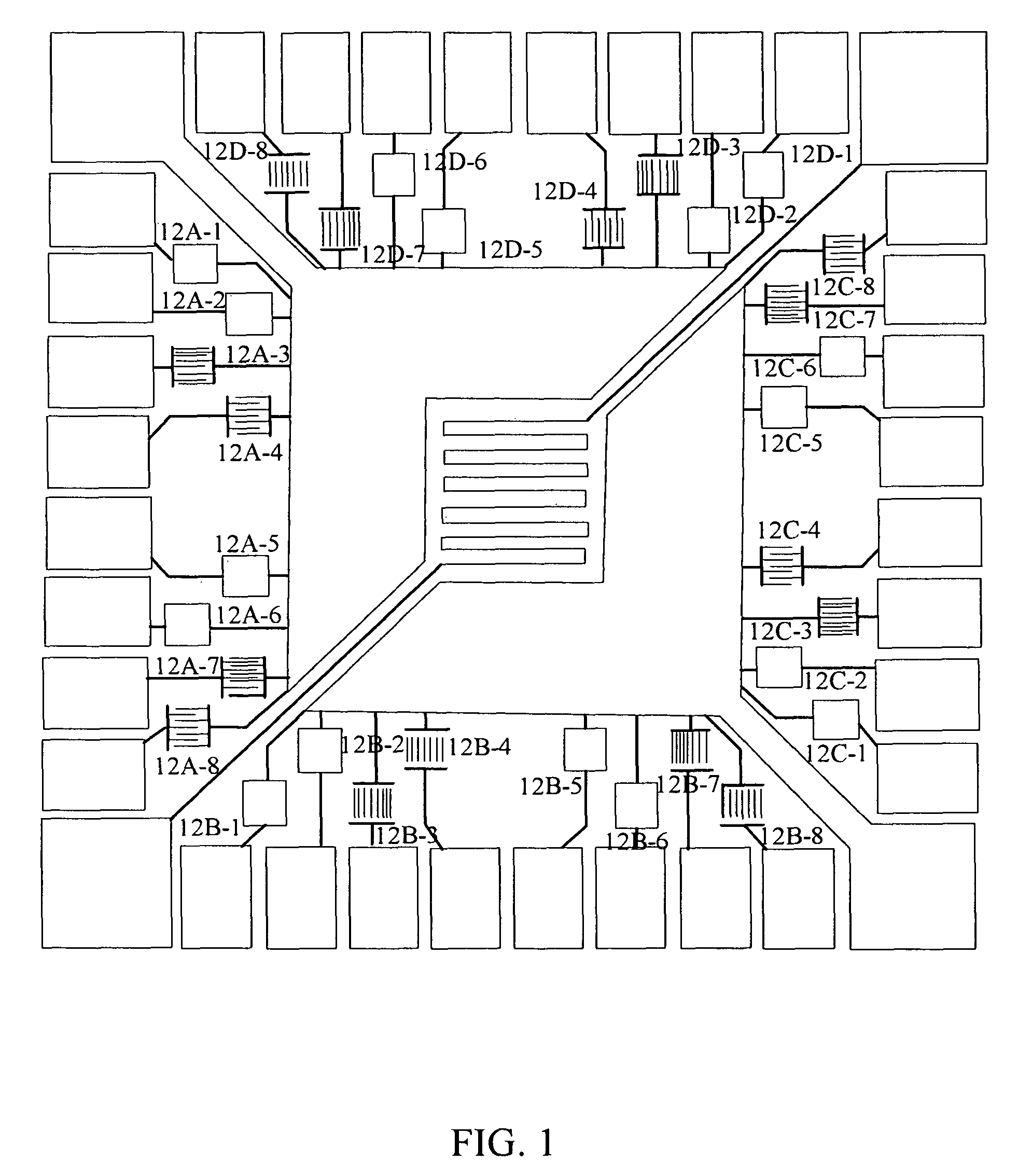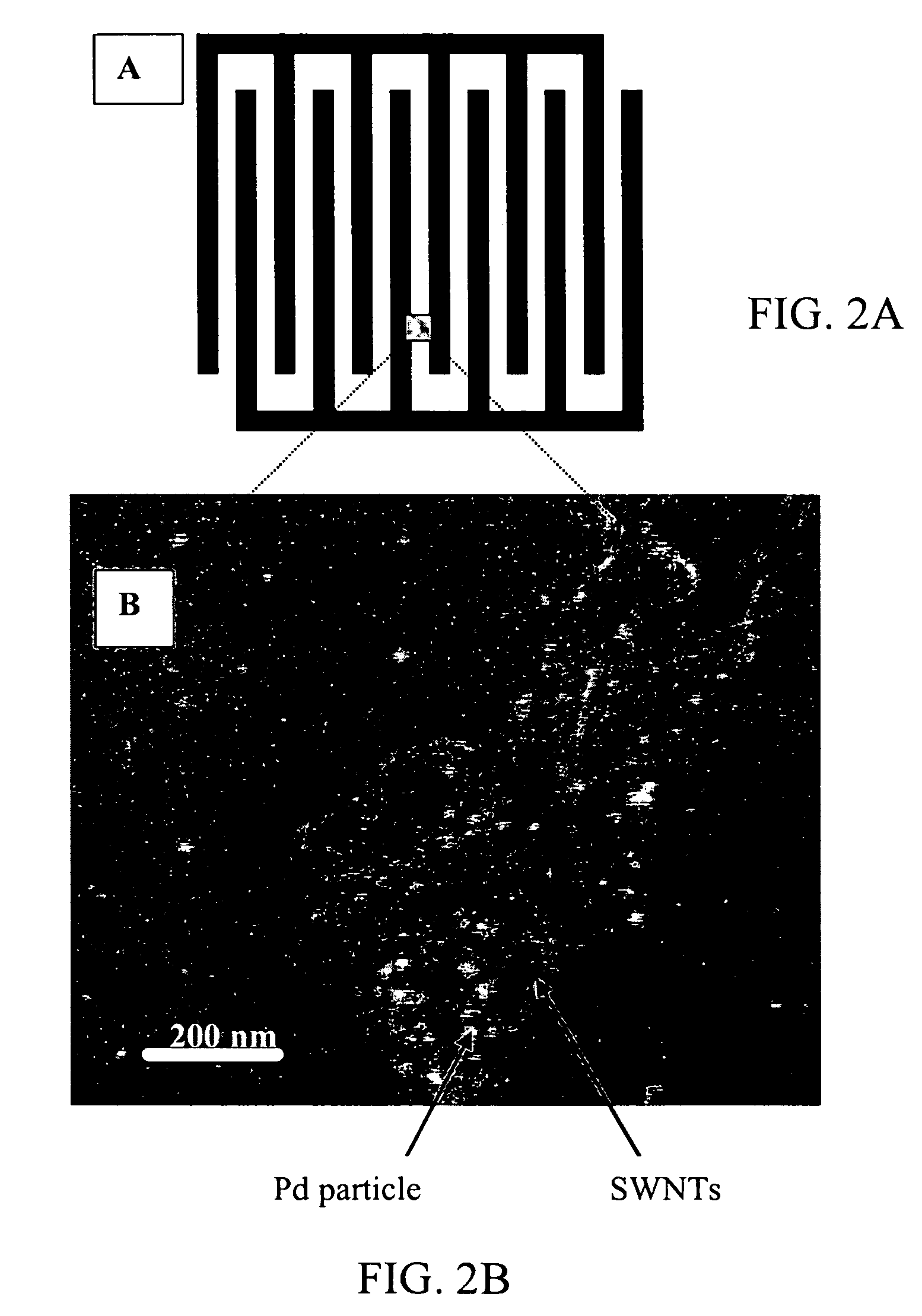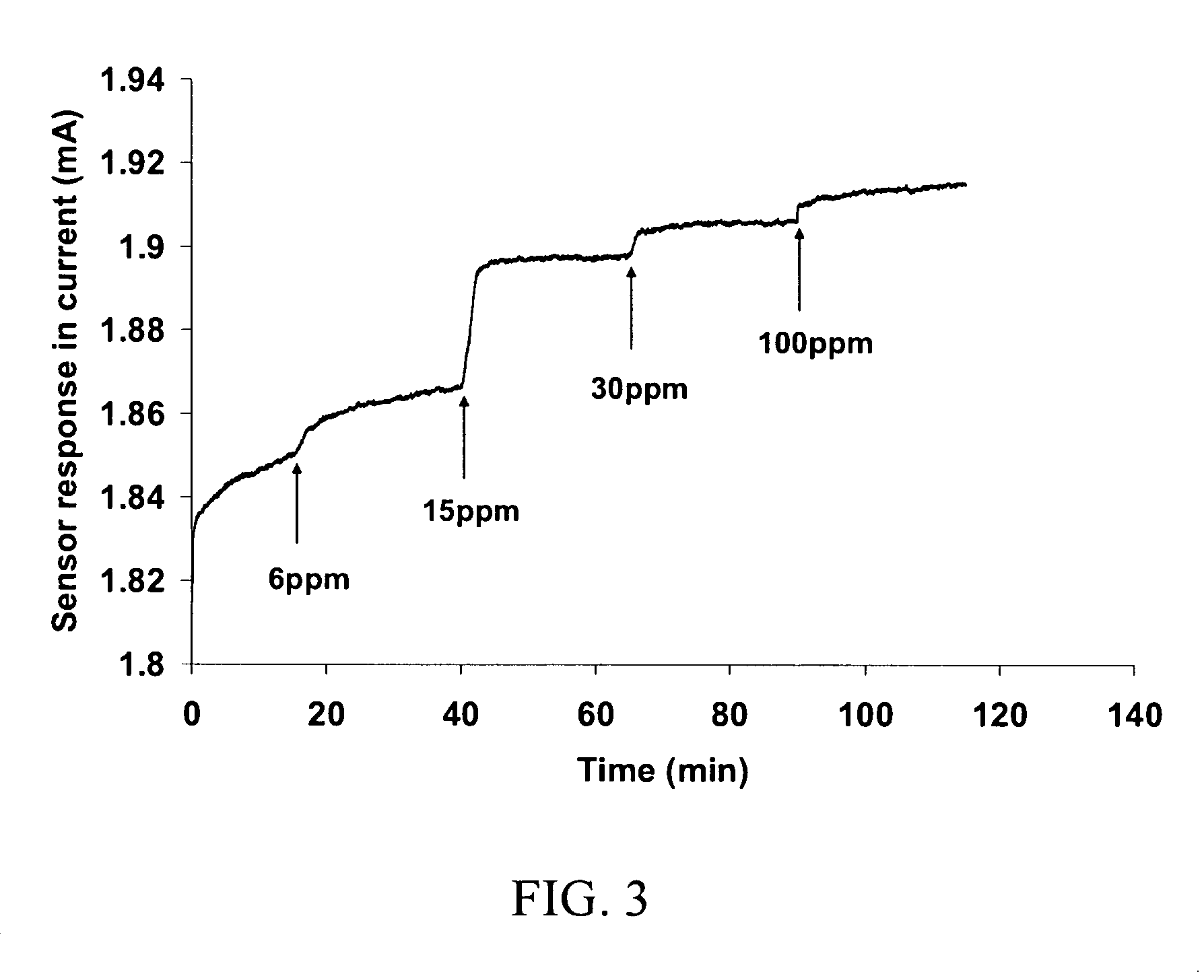Real time oil reservoir evaluation using nanotechnology
- Summary
- Abstract
- Description
- Claims
- Application Information
AI Technical Summary
Benefits of technology
Problems solved by technology
Method used
Image
Examples
Embodiment Construction
[0025]FIG. 1 illustrates a nanosensor 11, constructed according to an embodiment of the invention, including 32 interdigitated electrode fingers (“IDEFs”), 12A-1 through 12D-8, connected to first and second voltage sources, with a controllable voltage difference. In FIG. 1, a 1 cm×1 cm chip with Q sensing elements and SWCNTs bridging the gaps between adjacent IDEFs (Q=2-32). Each IDE is fabricated using conventional photolithography with a nominal finger width of 10 μm and gap sizes d=8, 12, 25 and 50 μm, or any other desired set of gap sizes. The fingers and contact pads are thermally evaporated Ti (20 nm thickness) and Pt (200 nm thickness) on a layer of SiO2, thermally grown on a silicon substrate. The sensing material is bulk-produced SWCNTs from a HiPCo process (Rice University.), purified to remove amorphous carbon and metal impurities according to a procedure described in the literature. The purified SWCNTs are dispersed in a selected solvent, such as dimethyl formamide, to c...
PUM
 Login to View More
Login to View More Abstract
Description
Claims
Application Information
 Login to View More
Login to View More - R&D
- Intellectual Property
- Life Sciences
- Materials
- Tech Scout
- Unparalleled Data Quality
- Higher Quality Content
- 60% Fewer Hallucinations
Browse by: Latest US Patents, China's latest patents, Technical Efficacy Thesaurus, Application Domain, Technology Topic, Popular Technical Reports.
© 2025 PatSnap. All rights reserved.Legal|Privacy policy|Modern Slavery Act Transparency Statement|Sitemap|About US| Contact US: help@patsnap.com



